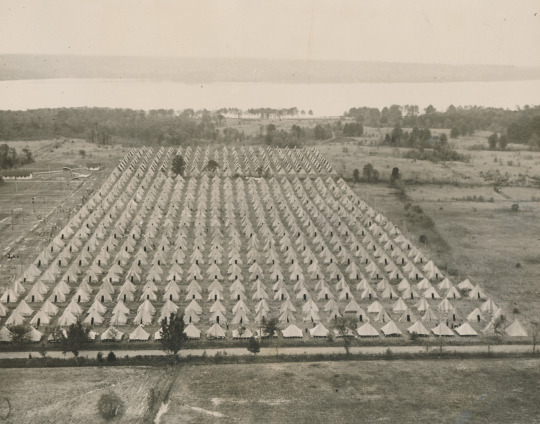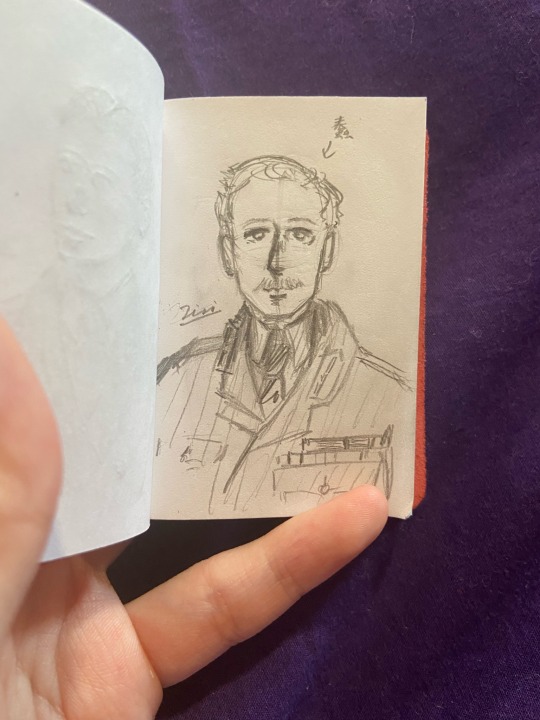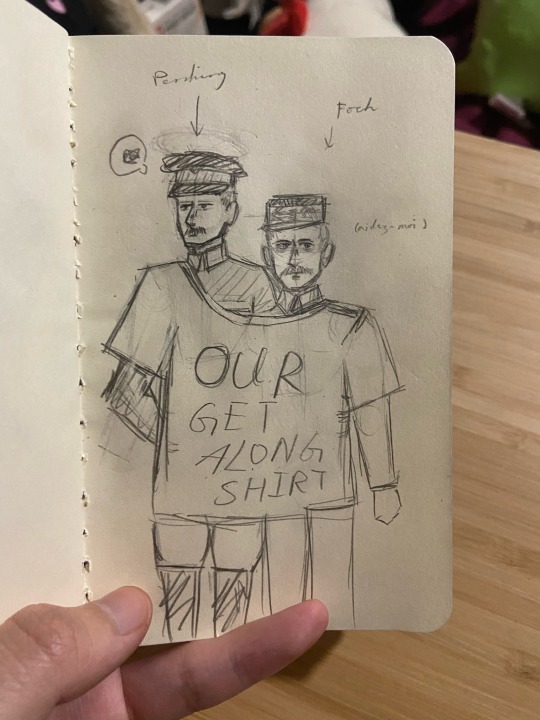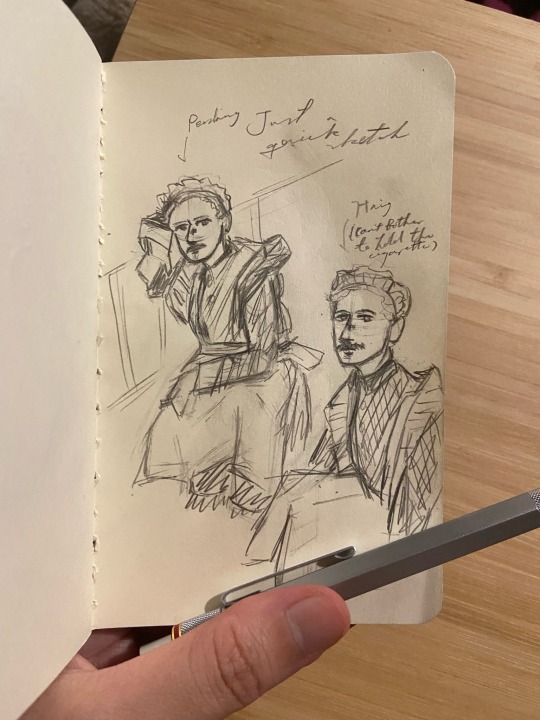#bonus expeditionary forces
Photo

World War I veterans seeking early payment of a promised service bonus gather on the grounds of the Washington Monument June 2, 1932.
Upwards of 17,000 veterans and another 28,000 family members and supporters descended on Washington, D.C. and camped in a number of different locations around the city, including vacant buildings. The largest and most famous was on Anacostia flats.
Note that black and white veterans are mixing freely on the Monument grounds in contrast a nearby segregated beach on the Tidal Basin.
Source.
#washington dc#washington monument#service bonus#bonus march#bonus army#bonus expeditionary forces#united states army#racism in america#african americans#world war 1#dangerous radicals#the great depression#scenes from the class struggle#military veterans
1 note
·
View note
Photo



Town square in the Valley of Two Sky River, as the locals converge on a great machine from across the Kiln desert; the vanguard of the Reclamation. These ‘Kilnrunners’ are part of the forward expeditionary forces of the Reclamation, and have long endurance and survivability, as well as diplomatic facilities.
(Bonus WIPS: you can see more on my Patreon: https://patreon.com/alexries)
423 notes
·
View notes
Text

Recent Acquisition - Photograph Collection
Original May 1933 caption: "An air view of the Bonus Army Camp at Fort Hunt, VA. where the vanguard of the new Bonus Expeditionary Force has already arrived and established headquarters. Troops from Fort Meade have equipped the camp, a deserted Army post, with 843 tents and accommodations for 6613 men."
20 notes
·
View notes
Text

2003: The Columbia disintegrated upon re-entry with all hands lost, the Concorde flew it’s last flight, and that god awful agency, the Department of Homeland Security was created.
Meanwhile in Iraq: A US Air Force (USAF) ground crew with the 28th Expeditionary Refueling Squadron (ERS) inventory tools during minor maintenance to KC-135 Stratotanker refueling aircraft, in support of Operation IRAQI FREEDOM
A note to add about this photo, I cannot express to you how important this job is. Tools lost or left on aircraft have created many accidents and it is vital that every tool a maintenance person carries on the jet needs to be accounted for when the job is finished. This photo is a testament to the professionalism of the United States Air Force.
Bonus question... what is the jet farthest from the photographer (the last one in the line)?
OPERATION IRAQI FREEDOM; TSGT Janice H. Cannon, USAF; April 2, 2003
@tcamp202 via X
7 notes
·
View notes
Link
0 notes
Text
Remember the Battle of Dunkirk: May–June 1940.

Not every victory means you won a battle. Sometimes a victory can be a well-executed retreat, and that’s exactly what happened during the Battle of Dunkirk in late May 1940. With the expeditious collapse of French resistance against German forces during the Battle of France, British troops found themselves trapped in Dunkirk, a town in Northern France. A massive effort of both military and civilian vessels successfully ferried 338,000 British Expeditionary Force members across the channel to Britain. The maneuver became known as the “Miracle at Dunkirk,” and it proved a powerful rallying cry for the dark days ahead.
The greatest aid in the ally’s escape strangely came from Adolf Hitler himself, who, likely fearing an Allied counterattack, halted Nazi armored forces bearing down on Dunkirk for two days. Those 48 hours were vital in the Allied effort to rescue the soldiers cornered on the European continent. Although buoyed by the retreat, Winston Churchill also countered with a dose of reality that hard fighting was still ahead, saying “we must be very careful not to assign to this deliverance the attributes of a victory … Wars are not won by evacuations.”
[Bonus: Lost Winston Churchill Essay Argues That Aliens Exist]
0 notes
Photo

"'Bonus or Bust, Orlando to Washington' -- shanty in encampment built by World War I veterans in the Bonus Expeditionary Force in Washington, D.C." Photographed July 1932.
The "bonus" was a benefit, specified by the World War Adjusted Compensation Act of 1924, that WW1 veterans were supposed to redeem no earlier than 1945; their demands for early compensation during the depths of the Depression led to the Bonus Army protests of 1932, in which some 40,000 mostly unemployed veterans gathered from across the United States to demonstrate for cash-payment redemption of their service certificates.
34 notes
·
View notes
Text
Burn book type of sketches
For some reasons, very likely because of Douglas Haig (actually found out about him when I went to Museum of Edinburgh the first time), I got into WWI so I just decided that I am drawing some dudes.
SO- May I present: Sir Douglas Haig and John J. “Black Jack” Pershing, commanders of British Expeditionary Forces and American Expeditionary Forces respectively.
They two were friends and they corresponded quite frequently after the war until Haig’s sudden death in 1928. I’ve been reading about WWI commanders lately, and there’s some stuff going on between the West Front Allied generals, so why not make it like a Burn Book?
Here is my dumb blondie Douglas 😔✨ (he’s Scottish and I luv him)

Ngl I only draw Pershing by virtue of being friends with Haig—I guess he will be the only American that I will ever draw except Hollywood stars.

Bonus: shitposting


#douglas haig#sir Douglas Haig#dumb blondie#i luv you goddamnit#John J. Pershing#black jack Pershing#someone who would have thought he had the N word pass if being in 21st century#going to draw Foch next since he needs more love#maybe I should draw Joffre or Pétain as well#Pétain was good in WWI but him in WWII was pee#history shitposting#Ferdinand Foch#ferdi foch#smol fightey babey#Foch sets my soul on fire so now I’m so motivated to get everything done#thank you Ferdi
11 notes
·
View notes
Text
a bit of historical / military context for 1917
because it certainly added to my appreciation of the film to understand a little more of the background of a few of the lines :’) ♡
“the last time i was told the germans had gone, it didn’t end well”:
here, schofield is referring to the opening day of the somme on the 1st of july 1916, and, more specifically, the first day of the first battle of thiepval ridge.
in the week prior to the opening day, the british expeditionary force (BEF) let loose an artillery barrage on the german positions of some 1.7 million shells. the commander of the fourth army, general sir henry rawlinson, told his subordinate commanders: “nothing could exist at the conclusion of the bombardment in the area covered by it.” in short, the germans were supposed to be gone. so sure were the generals of utter success, a misguided feeling of complete calm optimism filtered down through the ranks - so much so that the infantry forces were instructed that there need be no hurry in getting across no man’s land and into the enemy trenches: there would be little to no resistance, as the germans and all their artillery and machine gun outposts would have been obliterated, and they could take it at a leisurely pace across the land that was hundreds of yards wide at some points.
of course, within just a few minutes, the opening day turned into a catastrophic disaster. the artillery barrage had hardly touched the german defences and the majority of their troops had been sheltered safe and sound in deep underground bunkers for the entire week. the barbed wire had not been cut by the shelling as the generals had hoped; the land between the british and german lines was torn up by their own artillery and muddy from days of rain; and the germans were not gone. when the british mine at the hawthorn redoubt was blown at 07:20 rather than at 07:28, when the other mines along the front line were due to be detonated to begin the offensive, the germans were given a full ten minutes warning of the british attack and could set up their defences before the infantry had even gone over the top of their trenches.
at 07:30, 2,000 officers blew their whistles all along the 12-mile stretch of front and the 65,000 soldiers of the first wave climbed out into no man’s land all at the same time and began their simultaneous advance in one, long line. when schofield climbed out of his trench, he would have started on the muddy, uphill climb towards the ruins of thiepval village, with tens upon tens of thousands of soldiers on either side of him and the men that he had gone through training with most likely among them - in relative silence at first, as the echoes of the whistles died away, but soon in roaring chaos, screaming confusion, and white-hot fear as the wire was discovered to be uncut, the germans were discovered to be very much alive, and the orderly advance fell into bewildered and terrified disarray. within seconds, it was slaughter. 65,000 soldiers died on that first day alone and over four million would become casualties in the following four months, making it one of the bloodiest battles in human history.
all because, despite cheerful promises, prideful boasting, and empathetic assurances to the contrary, the germans were not gone.
“lieutenant leslie has command”:
it really does need saying just what a vast degree of difference there is between a major being in command, as had been the case before leslie was forced to take over, and a lieutenant. the section of the yorks that were holding the front line was most likely a company, around 150 soldiers at full strength. a company was commanded by a major, with a captain as second-in-command, while a lieutenant was the second lowest ranking commissioned officer in the BEF, just above a second lieutenant.
to put into perspective what a lieutenant’s role usually comprised, they were in command of one platoon each - around 50 soldiers - with a sergeant as their second-in-command, corporals in command of each of the three or four sections within the platoons, and lance corporals in command of the fire teams. platoons would have a small headquarters, and command of one was usually a newly commissioned officer’s first posting before they moved on to bigger and better things. it is therefore staggering, and truly upsetting in the context, that a lieutenant was put in a position where he was forced to take over in the place of a major, a full two ranks above him - and even more so that he was clearly left as the highest ranking officer in the company.
no wonder he was so overwhelmed - he was a relatively junior officer, already traumatised by war and most likely by losing all the men he may have been close to only two days ago, who had suddenly been handed the lives and wellbeing of a hundred men and told to care for and lead them. the burden of such sudden responsibility, of not being able to do or be enough for them, would have been too much to cope with for most anyone, and it’s little wonder he turned to alcohol to numb the fear and, perhaps, the insecurity.
“the germans are gone” / “i think they wanted to bury us”:
from february through to the 5th of april 1917 - 1 day before the beginning of the film - the german army initiated operation alberich and retreated back to a newly formed defensive position known as the siegfried position, or the hindenburg line to the BEF. it was built to shorten their stretch of held land by 30 miles and replace the former front line, which had been increasingly manned by insufficient numbers of physically and psychologically drained soldiers and which could no longer be held: their fighting force on the western front had been depleted and exhausted by the battle of the somme in 1916, the success of their offensives on the eastern front had forced them to stretch their resources across an even larger stretch of land, and the entrance of romania into the war had added even further strain.
by wasting the land between their old trench systems and their new line, they hoped to delay an expected spring offensive by the british and french forces. to achieve this, they completely desolated the landscape, turning it into a bleak and devastated wasteland that would severely try the logistics and resources of the anglo-french advance, and render it unusable, uninhabitable, and often dangerous to even cross: they systematically destroyed bridges, buildings, roads, forests, and wells; booby-trapped buildings and objects that they thought might tempt a british soldier to pick up, such as trophy helmets, souvenirs, and food; and left the remains of barbed wire entanglements, deep shell holes and old trenches full of water, and unexploded artillery shells in the former battlefields.
“the sap trench was blown to hell weeks ago”:
sap trenches were temporary, shallow tunnels dug under no man’s land and towards enemy lines so close to the surface that when an offensive was launched, the attackers could collapse the tunnel roof, advance troops into a trench that was now far closer to the defenders than the latter were anticipating and way beyond the front line that now lay behind them, and go over the top with a much shorter distance to cover before they reached the enemy trenches.
had they been better and more extensively used during the battle of the somme, they might have made all the difference to the soldiers who had to advance across no man’s land in full view of the germans watching from up above on the high ground.
“at least wear your medal”:
it’s possible schofield was awarded a medal for gallantry at the somme - perhaps for having reached the village of thiepval itself, as a few advancing BEF troops were seen to have done (and which then ultimately resulted in even more carnage, as the no doubt terrified and bewildered soldiers entering the village and finding themselves alone and without the rest of their battalion inadvertently prompted the british artillery to direct fire away from the german defences in the village, thus leaving the troops still trapped down below open to even worse targeted machine gun fire) when most scarcely made it out of the trenches - but it’s perhaps more likely that he was simply awarded a medal for having participated in the battle.
bonus bit, because it breaks my heart:
it’s entirely possible that, with the air of optimism in the BEF prior to the first day of the somme, schofield, perhaps a fairly fresh recruit, was daring to feel hopeful. that he was smiling and laughing and believing that maybe it would actually work - maybe it would all be okay. and that, afterwards, he was left with his spirit destroyed. if schofield was a different person before the war - if he was happier, if he smiled more, if he softly but passionately loved books and poetry and flowers - then thiepval took it all away and turned him into the quiet, hollow-eyed man we know.
(and, to just copy-paste my own tags on an earlier post about the fact that he’s seemingly stagnated at lance corporal after so many months because it somewhat ties in:
have they tried to promote scho and he said no? has he just sunk into his silence and become almost invisible and forgotten? has he done something wrong and they won't promote him because of it? bad behaviour? did he go mad after thiepval and do that thing some soldiers in the trenches did where they just try to go over the top and get themselves killed? and they've been watching him distrustfully ever since in case he has another outburst? did he used to be a higher rank and they demoted him because of shellshock or a lapse in ability because he just went silent after his trauma? did he ask to be demoted? has he really just stagnated at lance corporal? there's so much DEPTH there.
like i feel like someone can only be that... quiet and Given Up and distant if they’ve absolutely lost it at one point and then just accepted that there’s nothing they can do and crumpled into learned helplessness by the time we meet them. that’s my headcanon now: he lost it and was just unhinged and raging and screaming against the injustice of all his friends dying, and he was given an official warning and maybe demoted and eventually just faded into a silent nothing when he realised no one cared and no one would do anything and nothing would change. and now he’s been left with that incredible capacity for leadership, with all those skills, with all that caring, and nowhere for it to go)
#im here im queer im BACK FOR MORE BABEEEY#1917#mine#honestly that thing about leslie makes me so SAD#leslie does care!!!! he cares so much!!!!! he loves kilgour!!! he's just AFRAID AND DOESN'T BELIEVE IN HIMSELF#DOESN'T THINK HE#'S CAPABLE OF LEADING THEM#I LOVE HIM
89 notes
·
View notes
Text

Tech Duinn Expeditionary Force (added bonus of one emo boy)
#mabinogi#marleid#piran#cethlenn#g22#g23#kiminia#kimi doodles#lord have mercy I dont have the patience to draw vayne's armor right now
1 note
·
View note
Photo

Remembering the Forgotten:
A Look at WW1 through the Lens of Pre-Code Hollywood
By Heather Babcock, copyright 2018
“Pain. Agony. Continual torture. Day after day, like a million ants eating me alive. Do you know what that means? No, you don’t. Because when I was being blown to bits, you were sitting here safe and comfortable. And you’re still sitting here in judgement.” – Tom Holmes (Richard Barthelmess), Heroes for Sale (1933)
Remembrance Day is not about "glorifying war". November 11th is not about the men, safe in their power, who created the wars. Rather, Remembrance Day is about the men and women who left their homes and their families to sacrifice - sometimes their lives - for us: for the freedoms we can choose to take for granted today. November 11th is about the Veterans who are not here to tell their stories. It is about the Veterans who thankfully are still here to tell their stories. And it is about those who cannot or could not tell their stories because they are or were too painful to verbalize.
Sound motion pictures (“talkies”) were introduced to the public about nine years after the end of World War One. Many of the top directors of early sound films – such as Busby Berkeley, James Whale and William A. Wellman – were WW1 veterans. War films made during this period, while in no means shying away from the death and destruction of the battlefield, are not gory as the war films that would be made in later decades. War films released during Hollywood’s Pre-Code period focus more on the mental, emotional and financial struggles that the WW1 veterans faced after coming home. Perhaps the directors – who may have experienced PTSD themselves – did not want to exploit the real-life horrors and violence they had faced for an audience’s entertainment. While modern war films focus on battlefield action, Pre-Code war movies focused on humanity and loss.
In the 1933 film Heroes for Sale, Richard Bartelmess plays Tom Holmes, a WW1 soldier whose heroic act on the battlefield is rewarded not with a medal but with a morphine addiction. He gets a job at a bank and attempts to hide his addiction but his drug dealer keeps pushing up the price. Desperate, Tom goes to see his doctor. The doctor refuses to prescribe the drug and instead calls Tom’s boss at the bank, who promptly fires him. “You fellows forget the war is over,” the smug banker chastises Tom. “Time to quit beating the drum and waving the flag.” This scene is interesting for a couple of reasons: as is often the case in Warner Brothers’ Pre-Code films, the banker is presented as sinister and downright evil, which makes a lot of sense in a film that was released about three and a half years after the stock market crash, but even more importantly this scene gives flesh to the ingratitude and indifference that some WW1 vets felt they were receiving upon returning home. In the groundbreaking 1932 movie I Am a Fugitive from a Chain Gang, WW1 vet James Allen (the wonderful Paul Muni) exclaims in frustration: “No one seems to realize that I’ve changed – that I’m different now! I’ve been through hell! Folks here are concerned with my uniform and how I dance. I’m out of step with everybody.”
In his 1931 book Only Yesterday: An Informal History of the 1920’s, author Frederick Lewis Allen describes a 1919 Life magazine cartoon in which a personification of Uncle Sam says to a WW1 vet “Nothing is too good for you, my boy! What would you like?” to which the soldier replies “A job.” About fourteen years later, Joan Blondell and Etta Moten Barnett performed the boot stomping finale “Remember My Forgotten Man” in the movie Gold Diggers of 1933. Blondell speaks the song’s opening lyrics:
“Remember my forgotten man? You put a rifle in his hand. You sent him far away, you shouted ‘hip, hooray!’ But look at him today.” (Lyrics by Warren and Dubin)
The elaborate number, choreographed by WW1 vet Busby Berkeley, begins with the forgotten women: the war widows, grieving mothers and the girls whose dreams of home and marriage were ripped away in what is now considered one of the bloodiest and deadliest wars in history, with an estimated 37 million lives lost. “Forgetting him means you’re forgetting me,” Blondell sighs, as she wanders the streets looking for a trick. The number then shifts from the women to the men. We see proud men marching off to war in crisp uniforms. Girls throw flowers and toss kisses at them. Blankets of ticker tape and confetti seem to fall from the sky. But new soldiers come to join the parade: these men are bloody and bandaged; some carry dead, broken bodies on their backs. No one cheers these men on - the crowd has long disappeared. Next, the battlefield transforms into a breadline and young men shiver in the cold as they wait in line for a stale sandwich and a cup of watered down coffee. “We are the real forgotten men,” the soldiers sing. “Who have to lead this life again. We sauntered forth to fight, for glory was our pride but somehow glory died.”
Busby based the number on the Bonus Army of 1932. During one of the bleakest years of the Great Depression, an estimated 15,000 WW1 veterans, out of work and hungry, made their way to the nation's capital to demand payment of their bonus for serving in the war. They called themselves the "Bonus Expeditionary Force” and set up camp and ramshackle tents throughout Washington, D.C. Their pleas fell on deaf ears though when on June 17 the Senate voted against the House-passed bill that would have given WW1 vets immediate payment of their bonus. With no money and no place to go, the soldiers remained in their man-made camps. On July 28th, 1932 President Hoover ordered the Army to forcibly remove the veterans, along with their wives and children, using a violent force of tanks and cavalry with fixed bayonets and tear gas. Afterwards, the government set the veteran’s make-shift homes on fire.
Public sentiment was largely on the side of the WW1 soldiers: it didn’t matter which political party one followed, nobody - Republican, Democrat or independent - thought it was okay for the government to be gassing American war vets on the White House lawn.
Incidentally, Gold Diggers of 1933 was shot during the same time as Heroes for Sale. Both films are examples of the grit and perseverance of the people who lived through the Great Depression: “It takes more than one sock in the jaw to lick 120 million people,” Tom says at the end of Heroes for Sale, as he shivers in the rain in a Hooverville (an early 1930s term for a homeless camp). People in the 1930s may have been beaten down but they were looking up.
Canadian artist F.H. Varley’s 1918 painting “For What?” depicts a scene from WW1. Although a wheelbarrow of folded up corpses is in the painting’s foreground, this is not what immediately captures the eye. Instead we first notice the men in the background: one planting white crosses as another digs graves. Heavy clouds roll above them. This haunting painting is the strongest representation of PTSD (at the time referred to as “shell shock”) that I have ever seen.
On November 11th, we will remember the ones who died and the ones who were left behind to “lead this life again”; the decorated and the forgotten.
We will honor them as these films honored them: by remembering the horrors that they tried so hard to forget.
By Heather Babcock, 2018
#remembrance day#Veterans Day#precode film#1930s film#1930s movies#ww1#ww1 art#ww1 films#Paul Muni#william wellman#busby berkeley#joan blondell#classic hollywood#classic film
9 notes
·
View notes
Text

"NOUVEAU CAMP DE L'ARMEE DU BONI A WASHINGTON. Des anciens combattants dressent leur tente le long de l'avenue Pennsylvania, à Washington, dans le voisinage du Capitole. Les anciens combattants tenteront encore une fois de forcer le Congrès à leur payer des indemnités additionnelles. Un fort groupe d'anciens combattants est parti de New-York pour se rendre à Washington."
- from La Patrie (Montreal). May 16, 1934. Page 20.
#washtington dc#new york#bonus expeditionary forces#bonus army#military veterans#united states history#united states army#the great depression#unemployed veterans
0 notes
Photo



5 Small Pleasures From MARS ATTACKS! by Pablo Kjolseth
There are many obvious reasons to see Tim Burton's MARS ATTACKS! ('96). The composer is his long-time collaborator and the one-time Oingo Boingo front-man, Danny Elfman. The cinematography is by David Cronenberg's go-to-camera guy Peter Suschitzky, The cast features off-the-charts star-power that includes Jack Nicholson, Glenn Close, Annette Bening, Pierce Brosnan, Danny DeVito, Martin Short, Sarah Jessica Parker, Michael J. Fox, Rod Steiger, Tom Jones and that's just a chronological reading from IMDB that doesn't even get to scenes with Pam Grier, or Jack Black! Bonus: the aliens blow up Congress.

But let’s not forget the smaller pleasures:
You get to see the real-life demolition of The Landmark, a casino once owned by Howard Hughes.
2.35:1 aspect ratio! The only other film Tim Burton has shot that also features this anamorphic ratio was PLANET OF THE APES (2001).
Space ship designs influenced by Fred F. Sears' EARTH VS. THE FLYING SAUCERS ('56).

The only time Tim Burton was contractually allowed (spoiler alert) to kill off Jack Nicholson's character. And he does it twice.
Martians influenced by Wally Wood. People like me, who grew up on EC Comics and Mad Magazine , are terribly fond of Wally, and he provided some of the original sketches for the 1962 Mars Attacks! trading cards put out by The Topps Company which inspired the movie.

On the aforementioned topic of the Topps trading cards, Alex Cox, of REPO MAN ('84) fame gave me the following insight back in 2011:
As a young boy, having read The War of the Worlds and The Time Machine, and other great works, I also started chewing bubble gum. So it was natural that I would acquire a series of bubble-gum cards about the American Civil War, which were tremendously blood-thirsty and exciting, and also a series of bubble-gum cards about the Martian invasion of Earth in the late 50s, early 60s, which were titled Mars Attacks!
There were 52 units, maybe 53 including the last card, which was the index. It was about Martians in flying saucers that kind of related to the flying-saucer scare of the 1950′s. Martians in flying saucers attacked Earth using a variety of cruel devices including a giant robot, a freezing ray, a giant flame-thrower and everything else that you can imagine. For whatever reason, they weren’t killed by bugs or microbes. They were killed by a retaliatory attack. Somehow the Earth people or military forces had managed to hide themselves and create a rocket force to destroy the Martians on their home planet.
I brought this collection of bubble-gum cards to the attention of the Hollywood Studios and was involved, for a while, with John Davison, in a project called MARS ATTACKS! It was based on the bubble-gum cards, ending with the Earth’s retaliation against Mars. But the Earth’s expeditionary force got lost on Mars, could never find the capital city, and ultimately all died, killed by microbes in the alien environment. The film that I was planning was never made. But years later it was resurrected by Tim Burton, with the same casting director, Vicky Thomas, who at one point called me to ask if I’d owned the rights to the bubble-gum cards. But no one had ever secured the rights to the bubble-gum cards, so – unfortunately – I said I didn’t. At which point I never heard anything more.
But the Tim Burton film got made. The opening scene was the best, with the burning cattle. Even if you think of it; it’s impossible that cattle could catch on fire like that, burning for a period of time, but it was a great opening scene, and Vicky cast it, and – as far as I know – she also provided the “wee-ack-ack-ack-ack” Martian voices.

Vicky Thomas helped Cox cast REPO MAN, SID AND NANCY ('86) and WALKER ('87). Producer John Davison is known to most as the Executive Producer to ROBOCOP ('87) but he also helped Alex with HIGHWAY PATROLMAN ('91) and produced SEARCHERS 2.0 (2007). It would have been fun to see their version, but I can’t complain with Burton’s dark comedy, which is about as much dark fun as one can get away with when saddled with a PG-13 rating.
#FilmStruck#Mars Attacks!#Tim Burton#Jack Nicholson#Sylvia Sidney#Alex Cox#Vicky Thomas#Pablo Kjolseth#StreamLine Blog
52 notes
·
View notes
Text
Totally Real Depiction of the Design Board for the Canadians, Civilization 6: Gathering Storm
Firaxis: So, we want to introduce the Canadians for the first time to the Civilization series, and we’re brainstorming some ideas about their unique units.
Canadians: Oh, uh, okay. Well, the history of our country is comparably short, but I suppose we could have a unit like the Voyageurs, which could give the civilization an edge in exploring the map and settling cities. Oh, or maybe we could have a unit based on the Canadian Expeditionary Force, which really punched above their weight in World War I-
Firaxis: We’re adding Mounties.
Canadians: O-okay. I mean, the RCMP is a gendarmerie, so they count as a military force, and they did serve some functions during the Great Wars, but I feel like it’s a little bit stereotypical and unimaginative. Also-
Firaxis: MOUNTIES
Canadians: ...Also, the RCMP are a bit problematic, they have a history of perpetrating violence against First Nations and-
Firaxis: MOUNTIES MOUNTIES MOUNTIES
Canadians: ...
Canadians: hahaha sure I guess we could have the Mounties as a unique unit and I suppose our unique bonus could be building farms in the tundra because we can do that and our unique building could be a fucking hockey rink or something wouldn’t that be wacky
Firaxis: HOCKEEEEEEEEEEY
#we've had the secret to growing watermelons in yellowknife this entire time#global climate change is a conspiracy to crash the tundra watermelon industry#haha fucking kill me#chariotposting#strategy games#civilization#canada
0 notes
Text

The veterans were desperate. Gen. MacArthur ordered U.S. troops to attack them.
It was the height of the Great Depression. Nearly 20,000 unemployed veterans had converged on Washington to demand bonus payments from Congress and President Herbert Hoover. Led by Walter W. Waters, a former sergeant from Oregon, they called themselves the Bonus Army or Bonus Expeditionary Forces, a nod to World War I’s American Expeditionary Forces.

Accompanied by his aide (and future president) Maj. Dwight D. Eisenhower, MacArthur had a contingent of troops at Fort Myer and Fort Washington on alert. At 1:50 p.m., Maj. George S. Patton ordered his cavalrymen to saddle up.

At midnight, MacArthur held a news conference while the president was in bed and accused the Bonus Army of subversion: “They had come to the conclusion that they were going to take over the government in an arbitrary way or by indirect means.”
The next day’s Washington Post carried a banner headline in capital letters: ONE SLAIN, 60 HURT AS TROOPS ROUT B.E.F. WITH GAS BOMBS AND FLAMES.
Newsreels showed the military with tanks, routing unarmed veterans. To many, the action confirmed a view of Hoover as coldhearted and detached from reality. Reading a New York Times account, Democratic presidential candidate Franklin Delano Roosevelt told his aide, future Supreme Court Justice Felix Frankfurter, “Well, Felix, this will elect me.”
0 notes
Text
Before ‘Trump’s troops,’ Gen. Douglas MacArthur attacked Bonus Army WWI veterans with tanks and tear gas
Before ‘Trump’s troops,’ Gen. Douglas MacArthur attacked Bonus Army WWI veterans with tanks and tear gas
[ad_1]

It was the height of the Great Depression. Nearly 20,000 unemployed veterans had converged on Washington to demand bonus payments from Congress and President Herbert Hoover. Led by Walter W. Waters, a former sergeant from Oregon, they called themselves the Bonus Army or Bonus Expeditionary Forces, a nod to World War I’s American Expeditionary Forces.
What happened in the nation’s…
View On WordPress
0 notes